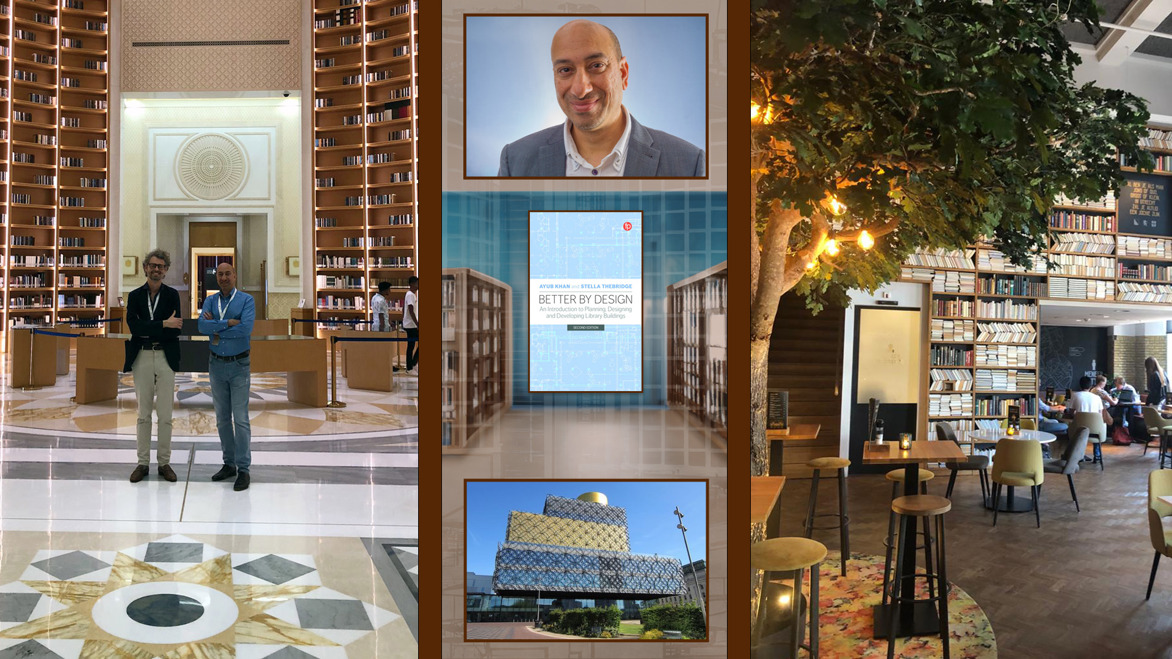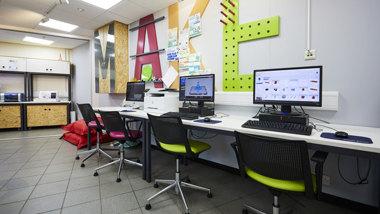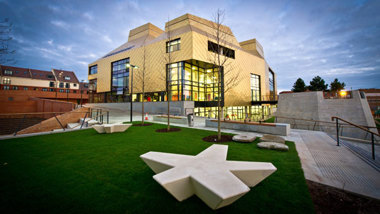The Evolution of Public Libraries
Designing Libraries Director, Ayub Khan, looks at the evolution of public libraries - and the implications for library design
13 Jul 2023


Reinvention
Public libraries have always adapted and reinvented themselves to the changing needs and preferences of their users - and they continue to do so. Books and reading remain central to what libraries do but - it’s a bit of a cliché to say so - they are not just about books nowadays. They are social places at the centre of their communities.
Having worked on the initial design concepts for the new Library of Birmingham, earlier in my career, I know books were only part of the plans. When I started out as a librarian around 75% of library spaces were for books and 25% for other activities and events. Now it’s the other way round.
The role of libraries as cultural destinations and venues - not just book-lenders - is now widely recognised. The fact that library programmes are almost always free to the consumer makes them even more important particularly, perhaps, during hard times like the ongoing ‘cost-of-living’ crisis. The old Victorian ethos of self-improvement for the masses still holds true, though we probably wouldn’t put it quite like that today.
Flexibility
All this, of course, has huge implications for the way we design libraries, and for how we may need to adapt their spaces in future - altering layouts perhaps several times during a building’s lifespan.
Designing libraries was very different in Carnegie’s day and weight was a defining issue, particularly for those with upper floors. The layout of a Victorian library was largely determined by the weight of book-stacks and where they could be positioned, from a load-bearing point of view. So layouts were fixed, not flexible.
Move forward to the 1960s when more modular construction methods began to allow for greater flexibility. Rectangular structural support sections meant the internal layout of a library could be changed - and bookshelves moved to create open spaces for other activities.
Nowadays we take full advantage of the flexibility built into modern designs. We have bookshelves on wheels that we can just move out of the way during performances or other events. But libraries continue to evolve and the buildings they occupy will almost certainly need to be reconfigured, sooner or later.
Libraries Today

Architects aren’t always library users, so it’s probably worth looking at the sort of services and activities libraries offer nowadays, to give designers some context.
Libraries still occupy a unique public role at the heart of their communities - welcoming people of all ages and backgrounds. Many, for example, provide services for newcomers, including migrants and refugees. Some have become Libraries of Sanctuary. The library is one democratic place where people from all walks of life can and do interact. From a homeless person to a business-owner, all customers use the same space.
Public libraries provide mainstream services but also work to support sections of society with more specific needs. Recent developments include, for example, autism-friendly libraries and grief cafés.
By providing free time on public computers with help on hand - plus support sessions - libraries help bridge the digital divide and combat digital exclusion. Some offer coding clubs for children, and maker-spaces to help all ages explore new technology.
Libraries provide services for job-seekers, small businesses and would-be entrepreneurs. Some have designated business areas or innovation centres. Customers increasingly use libraries as co-working spaces.
Wider needs
Libraries also respond to wider socio-economic needs. Many offered ‘warm spaces’ last winter (2022-23) - for people unable to afford heating at home. Public libraries supported people isolated at home by the coronavirus pandemic - for example by befriending telephone calls and (socially-distanced) book deliveries.
The coronavirus pandemic accelerated the trend towards providing more online library services, which have proliferated in recent years. However, the role of the physical library has become ever more relevant in an increasingly online world.
Libraries help treat another pandemic - loneliness and isolation - offering a warm welcome and opportunities for social interaction. They support a wide range of activities and events including reading groups and knit-and-natter sessions. Loneliness is said to be the scourge of modern times, and as bad for health as smoking.
Value to society
There is mounting evidence of the wider social, economic and health and wellbeing value of libraries. For example, Arts Council England-funded research concluded that - as well as making a significant economic contribution - “public libraries, first and foremost, contribute to long term processes of human capital formation, the maintenance of mental and physical wellbeing, social inclusivity and the cohesion of communities”.
They also have an educational role across the age-range - from rhyme-time sessions for toddlers to so-called ‘silver surfer’ classes for older users feeling left behind by technology. Importantly, libraries offer an attractive option for people wary of more formal learning opportunities.
Trends

What has changed more than anything is the use of space. Libraries are no longer just functional spaces - the focus nowadays is on the customer experience. Modern libraries are more akin to a retail environment and, like shops, they want to keep customers coming back. They are, after all, competing with other leisure outlets and attractions.
The library offer has expanded to include cafés, galleries and performance spaces. There is also a trend towards joint provision with services such as archives, museums or adult education on the same site. The first combined public and university library in Europe, The Hive in Worcester, opened in 2012.
Today’s libraries are laid out in different zones - such as quiet study, social and learning spaces - each focused on the needs of different user-groups. They are much more child-friendly and indeed embrace children, providing attractions such as soft-play areas. There is less of a barrier between staff and customers - the big old counters have gone and the staff are more like floor-walkers.
Technology, including AI, is built into the fabric of the building - from self-service equipment to sensory spaces. Some Victorian libraries adapt surprisingly well to modern use. Grand old reading rooms, for example, are ideal spaces for customers who bring in their own laptops to use the library wifi.
‘Open access’ is another important trend - using technology to offer 24-hour access to library services. It’s all about convenience and a positive customer experience. Libraries are becoming a ‘third space’ - somewhere between home and work or school, or a combination thereof.
Inspirational and green

Library design has to be functional and flexible - but it can also be inspirational. New libraries are often the centrepieces of urban regeneration, like the aforementioned Library of Birmingham. Libraries can also help bring life back to our High Streets, so many of which are in decline.
New library buildings can be architecturally brave. Libraries can also put older or historic buildings to a new community use. The Designing Libraries website shows some good examples.
Both new-builds and adaptations are increasingly focused on greener designs and solutions. New libraries and renovations make greater use, for example, of natural light and ventilation, and outside spaces where possible - to minimise energy use.
Finally

Layout is key to the design process - creating a flow and an ambiance, making sure library spaces are welcoming, comfortable, attractive, easy to use and to navigate around. It’s also important that they look inviting from the outside, encouraging people to come in and explore. The trend is towards greater transparency, and a lot more glass.
In summary, public libraries provide the services people need, want and will use - and that’s never static. To paraphrase a famous quote from S R Ranganathan: the library is never really finished - it continues to evolve.